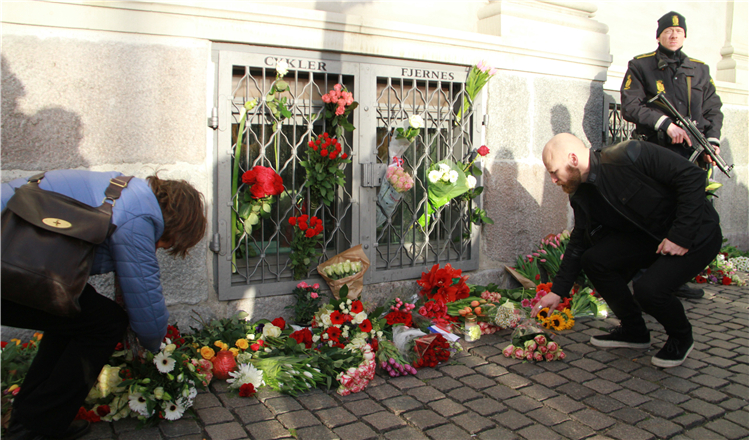A multilateral project to deepen Eurasian links
Updated: 2016-06-15 08:21
By Zhao Huirong(China Daily)
|
||||||||
 |
|
Greece's largest port, Piraeus, near Athens. [Photo/Agencies] |
The Silk Road Economic Belt and 21st Century Maritime Silk Road, proposed by President Xi Jinping, are China's strategic initiative. It is true that the Belt and Road Initiative can deepen China's relations with neighboring countries and promote peace and stability through common development. But what does the initiative mean for Eurasian countries?
The Belt and Road Initiative has four characteristics: peace, openness, fairness and tolerance. It means not being against any country or group, non-interference in another country's internal affairs, attracting all interested countries and international organizations, and respecting their wishes. The initiative, contrary to what some people think, is not an international project dominated by China. Instead, it is a long-term strategy of cooperation with all regional and international mechanisms.
The Belt and Road Initiative is committed to promoting the development of communication in Eurasia. After the collapse of the Soviet Union, the Eurasian communication and logistics systems slowly disintegrated. And it became difficult to establish a new, modern transportation system, at least in the short term, for lack of funds.
According to the Soviet era communication structure, the internal transport routes of one republic often had to pass through another republic's territory. The differences among Eurasian countries over territories, boundaries, ownership of resources and other issues made traffic problems in the region very complicated. For a long time, the region's aging transport infrastructure has remained fragmented, thwarting the development of the logistics industry and hindering economic development.
It is here that the Silk Road Economic Belt can help, because it is aimed at boosting infrastructure construction, promoting interconnection, improving transport facilities and strengthening the logistics network, in order to expand foreign trade. The Belt and Road Initiative can also provide the funds and technology Eurasian countries need to boost their economic growth.
The world economy is still recovering from the global financial crisis, and economic growth has slowed down in many countries with some being in recession. If the Eurasian countries can deepen economic cooperation and promote the free flow of production factors, they can improve their productivity and competitiveness. And by participating in the Silk Road Economic Belt, they can obtain funds from financial institutions such as the Silk Road Fund and the Asian Infrastructure Investment Bank, as well as get high-tech aid from China, which will help upgrade their production process, diversify their export market and facilitate trade.
The Belt and Road Initiative will also help Eurasian countries expedite the implementation of bilateral and multilateral cooperation projects. History shows that bilateral and multilateral cooperation projects facilitate the resolution of even serious problems between countries, improve mutual relations and promote regional stability.
For example, after work on the China-Central Asia natural gas pipeline project started, the relationship between the Central Asian countries has improved and strengthened. The leaders of some of the countries started communicating with each other again, discussing such vital issues as how to best implement the project within their territory, so as to derive the maximum economic benefit from it. This breakthrough produced a series of benign reaction, pushing the region's countries to deepen cooperation in some other areas, such as politics, security and economic integration of Eurasian countries.
The Belt and Road Initiative is one such multilateral project.
The author is director of the Research Division of Ukraine, Belarus, Moldova and the Baltic States of the Institute for Russian, East European and Central Asian studies, Chinese Academy of Social Sciences.
- Orlando massacre sparks gun-control bill
- Cambridge students celebrate end of exams with cardboard boat race
- Pensions for elderly threatened if Brexit wins, warns British PM
- Park calls for national unity on peninsula's denuclearization
- 232 Indian cadets take part in parade in Bhopal
- UK's Cameron warns health services, pensions could face cuts post-Brexit

 Turning straw to gold: folk artist's straw pyrography
Turning straw to gold: folk artist's straw pyrography
 People in shock after Florida nightclub shooting
People in shock after Florida nightclub shooting
 Shanghai Disneyland all set for official opening on Thursday
Shanghai Disneyland all set for official opening on Thursday
 British pageantry on parade for Queen's official birthday
British pageantry on parade for Queen's official birthday
 Carrying bricks to selling carrots: Life of child laborers
Carrying bricks to selling carrots: Life of child laborers
 Graduate revisits same university spot 19 years later
Graduate revisits same university spot 19 years later
 Euro powers land in France for UEFA EURO 2016
Euro powers land in France for UEFA EURO 2016
 The most unusualgaokao candidates in 2016
The most unusualgaokao candidates in 2016
Most Viewed
Editor's Picks

|

|

|

|

|

|
Today's Top News
Abe's blame game reveals his policies failing to get results
Ending wildlife trafficking must be policy priority in Asia
Effects of supply-side reform take time to be seen
Chinese State Councilor Yang Jiechi to meet Kerry
Chinese stocks surge on back of MSCI rumors
Liang avoids jail in shooting death
China's finance minister addresses ratings downgrade
Duke alumni visit Chinese Embassy
US Weekly

|

|







